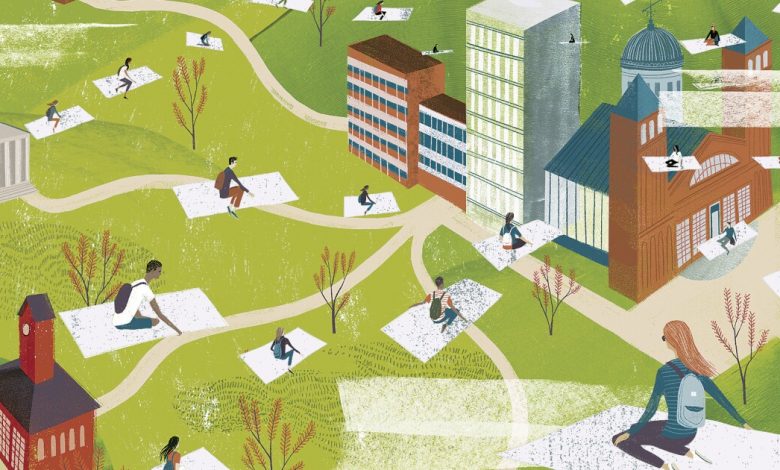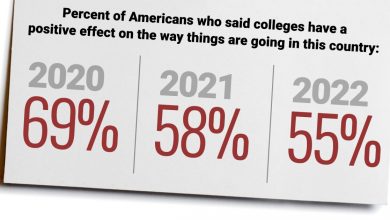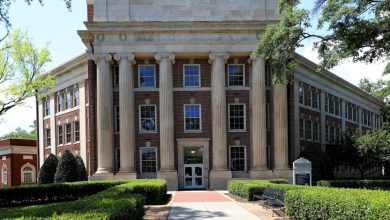Where Do Students Go to College? A New Study Looks State by State

Where students decide to go to college is a subject of never-ending intrigue in higher ed, with entire campus offices devoted to influencing those decisions. College choices are also complicated, with a range of factors — cost, location, program offerings, facilities, and more — moving the needle in different directions for individual students.
A new study co-authored by Craig Wills, the computer-science department head at Worcester Polytechnic Institute, and Chayanne Sandoval-Williams, a rising fourth-year undergraduate student at WPI, tries to provide some direction.
Using Ipeds data from 2012, 2018, and 2020, Wills and Sandoval-Williams characterized the college “market” in each state, indicating where students are more likely to stay in state for college and where they’re more likely to migrate elsewhere. The researchers focused on four-year institutions.
On average, 54 percent of all college-bound students attend an in-state public college, while 15 percent attend an in-state private college.
Students in Michigan, Louisiana, and Texas are more likely to attend college in their home states. The researchers described those states as “self-contained markets.”
In Texas, for instance, 91 percent of first-year students are from the state. Among all public colleges, Texas A&M University enrolls the largest number of in-state students, with Pennsylvania State University a close second.
Meanwhile, a larger share of students from New Jersey and Alaska are attending college out of state, compared to the average across all states. Despite that outward migration, institutions in those states are still enrolling a higher than average percentage of in-state students. The trend suggests a need for those states to increase their capacity for in-state students, the study said.
On the other hand, the “relatively fewer” in-state college-bound students and out-of-state first-year students in New Jersey and Alaska could also indicate that colleges in these states are “less attractive” than similar institutions in different states, researchers wrote.
North Dakota, West Virginia, and Utah, however, may have more on-campus capacity than they need for in-state students. While a relatively large share of students from those states decide to stay in state for college, the institutions enroll smaller-than-average shares of in-state students in their first-year classes. Those figures could also indicate that colleges in those states are “more attractive” than peer institutions elsewhere.
The study found that just 6 percent of college-bound students from Utah and West Virginia attend college beyond the immediate region, which the study defines as in state or in an adjoining state.
In contrast, high-school seniors from states including Hawaii and Oregon attend college farthest from their home state. Among specific institutions, the University of Colorado at Boulder and the University of Alabama at Tuscaloosa enroll the lowest percentage of students from the immediate area.
“I was mildly surprised in some cases,” Wills said. For example, he was struck by the broad geographic range that Tulane University draws students from. The reach of some public universities surprised him, too. “I was familiar with institutions like University of Michigan that had maybe a pretty broad reach, even though they are public institutions, but certainly other ones that I was less aware of popped up there,” he said.
Through Ipeds data, the study also examined how college-migration patterns might have been affected by the pandemic.
Wills and Sandoval-Williams found that, during the pandemic, from 2018 to 2020, the share of students studying fully online increased by 27 percentage points, and the percentage of international students at four-year U.S. colleges decreased by nearly 1 percentage point.
Over all, students traveled farther away from home for college during the fall-2020 semester. But a contributing factor might have been the increase in students studying online. They might have been taking classes at a faraway institution without physically migrating to the state.
The percentage of students specifically attending major state universities — “flagship, land-grant, and a half-dozen other major state institutions” — increased during the pandemic, and the distance those students migrated to get to their respective colleges decreased accordingly.
“The major state and national public institutions tended to attract more students because of the pandemic, but the students tended to reside closer to the institution,” the study states.
The study also noted that “national liberal-arts colleges saw a decline both in the number and migration distance of first-year students.”
Historically Black colleges and universities, though, saw an increase in the average number of first-year students, and an increase in how far students were traveling to attend.
Wills said the study could be useful for college administrators or state leaders to determine whether public universities are able to sufficiently address the enrollment needs of in-state students.
“For example, in Massachusetts, where I am, the percentage of college-bound students — in-state college-bound students who attend public colleges here — is relatively low, but the percentage that attend in-state private institutions is relatively high,” Wills said.
Source link






